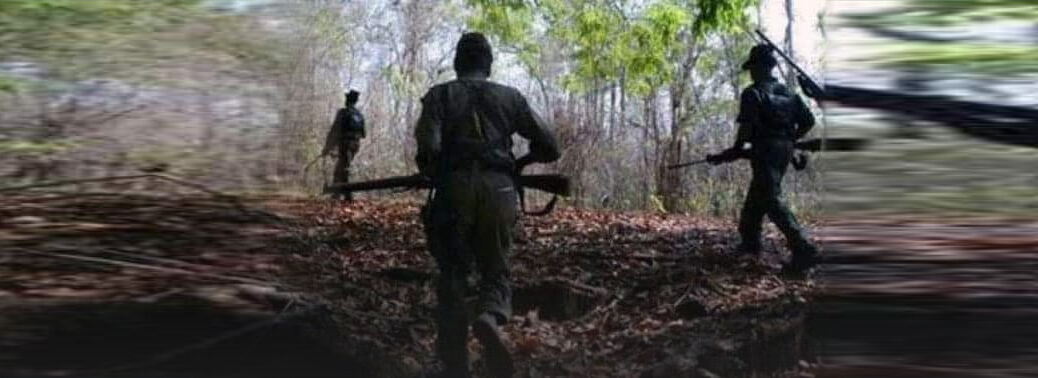DANTEWADA AMBUSH
11, Apr 2019

Prelims level : Indian polity
Mains level : GS-III Challenges to internal security through communication networks, the role of media and social networking sites in internal security challenges, basics of cyber security; money-laundering and its prevention.
Why in News:
The Election Commission has taken the correct decision to go ahead with the first phase of polling, on Thursday, in the Lok Sabha election in Chhattisgarh after the deadly Maoist attack in Dantewada on Tuesday.
Details:
- Maoists struck at a convoy in Dantewada, which comes under the Bastar parliamentary constituency, and killed Bhima Mandavi, the politician from Dantewada, and four security personnel.
- The aim of them was clearly to disrupt the electoral process.
History of Naxalism in India:
- First phase (1967-72): The movement had strong ideological moorings, receiving guidance from leaders like Charu Majumdar, Kondapalli Seetharamaiah, Nagabhushan Patnaik and others.
- Since 2004: In a significant development, the People’s War (then operating in Andhra Pradesh) and the Maoist Communist Centre of India (then operating in Bihar and adjoining areas) merged to form the CPI (Maoist) Party.
CPI (Maoist) Party
- It is the major Left-Wing Extremist outfit responsible for majority of incidents of violence and killing of civilians and security forces and has been included in the Schedule of Terrorist Organizations along with all its formations and front organizations under the Unlawful Activities (Prevention) Act, 1967.
- Its philosophy of armed insurgency to overthrow the Government is unacceptable under the Indian Constitution and the founding principles of the Indian State.
- The central committee of CPI (Maoist), the highest decision-making body, has instructed the front organizations to intensify their activities and mobilize people over issues related to Dalits and minorities.
Urban Naxals:
- In an intelligence report titled “Urban Naxalism: Growing Menace and Remedies,” Ministry of Home Affairs described Urban Naxalism as an old Maoists strategy to focus on urban centers for leadership, organize masses in urban areas through democratic means, build a united front and engage in military tasks such as providing personnel, material and infrastructure. Most of these organizations are led by well-educated intellectuals with a firm belief in the Maoist insurgency doctrine.
- They form propaganda/disinformation machinery of the party. The important functions of these organizations include the recruitment of ‘professional revolutionaries’, raising funds for the insurgency, creating urban shelters for underground cadres and providing legal assistance to arrested cadres.
Government approach to left wing extremism:
- The GOI’s National Policy and Action Plan emphasises on security and development. Reports on spread and trends of Left-Wing Extremist violence have highlighted that 90 districts in eleven States have been taken up for special attention with regard to planning, implementation and monitoring various interventions.
- The Central Government closely monitors the situation and supplements and coordinates their efforts in several ways. These include:
- Providing Central Armed Police Forces (CAPFs);
- Sanction of India Reserve (IR) battalions, setting up of Counter Insurgency and Anti- Terrorism (CIAT) schools;
- Modernisation and upgradation of the State Police and their Intelligence apparatus;
- Re-imbursement of security related expenditure under the Security Related Expenditure (SRE)Scheme. Providing helicopters for anti-LWE operations, assistance in training of State Police through the Ministry of Defence, the Central Police Organisations and the Bureau of Police Research and Development. Sharing of Intelligence & facilitating inter-State coordination. Assistance in community policing and civic action programmes
Way forward:
- It will be vital for the administration to ensure polling without fear of violence.
- There is a need for the security forces to keep updating their standard operating procedures. It is also a call for the civil administration to keep extending its reach in the forests of central India, especially Bastar. The capacities of the State police need to be addressed. Local communities, have to be reassured that the fight against Maoism is also a political one.






